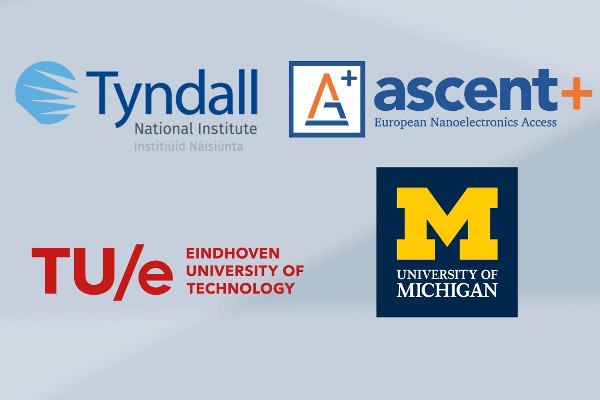
2D materials have been proposed as the basis of future nano-electronic devices, applications, and products, ranging from transistors to sensors, as well as in broader fields such as energy, healthcare, and quantum.
Working closely with the Professor Ageeth Bol group while at Netherlands’ Eindhoven University of Technology and the University of Michigan USA, as part of the ASCENT+ EU Infrastructures project, a multi-disciplinary team of Tyndall researchers have demonstrated a significant breakthrough in the field of 2D materials research, as a result of shared expertise and enthusiastic collaboration.
The paper, “Atomic Layer Deposition of Large-Area Polycrystalline Transition Metal Dichalcogenides from 100 °C through Control of Plasma Chemistry”, has been published in the prestigious Chemistry of Materials journal, with Dr. Miika Mattinen as first author.

The research has found early promise in the technology concepts formulated and basic principles that have been observed, with the area of research currently at a low Technology Readiness Level. Whilst there are still challenges to overcome, the work has been a promising development in 2D materials research.
Tyndall leads Emma Coleman, Farzan Gity and Ray Duffy, part of the Nanoelectronic Materials and Devices (NMD), CMOS++ cluster and MNS Centre teams, were part of the multi-disciplinary research team, who worked collaboratively to share infrastructure and thus were able to reduce barriers to complete the important work.
The drive to fabricate large-area semiconductor thin-film Transition Metal Dichalcogenides (TMDs) at low temperatures stems from opportunities in novel application areas for thin-film TMDs, and also from the need to solve bottle-neck thermal budget and integration issues of integrated circuit technology.
The team were able to demonstrate a plasma-enhanced atomic layer deposition (PEALD) process, capable of depositing transition metal dichalcogenide films at temperatures as low as 100 °C. For MoS2, the most widely studied TMD, this is the lowest temperature reported for a chemical gas-phase deposition process. The process also benefits from the advantageous characteristics of ALD, including wafer-scale uniformity, accurate thickness control, reproducibility, and facile scalability.
The record-low deposition temperature enables direct deposition of MoS2 films on low-cost flexible substrates such as poly(ethylene terephthalate). They have characterised electrical properties of the films using Hall effect measurements and fabricated field-effect transistors using films deposited at 100 °C.
The insight established in this work between plasma chemistry, film growth, film material properties, electronic figures-of-merit, and proof-of-concept demonstration of 100 °C processing which could facilitate flexible electronics applications in this domain, signifies a foundational advance in materials chemistry of TMDs and other chalcogenides.
While there will be future challenges and obstacles ahead, this is a significant milestone in 2D materials work and we congratulate all researchers involved on the project for their ongoing achievements.
